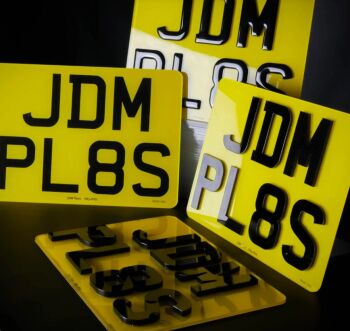There's no denying that electric bikes, or e-bikes as they are commonly known, have significantly transformed our commuting experience in the most exciting way possible. 
Electric bikes represent the future of transportation with all their advantages – convenience, impressive efficiency, and an unforgettable riding experience.
However, with the popularity of e-bikes, the spike in electric bike-related accidents has become a significant concern.
As a sobering reminder of this issue, let's take a moment to recall the recent unfortunate incidents on Manhattan Bridge. These reminders ring the alarm bells for the pressing need to prioritize the safe operation of electric bikes.
In light of these events, this blog post aims to spread awareness about e-bike safety and provide a comprehensive guide to prevent accidents, thus ensuring a safer and more enjoyable ride for electric bicycle enthusiasts across the globe.
Understanding E-bike Accidents
To effectively prevent e-bike accidents, we must understand their nature, causes, and associated risks. To achieve this goal, it's crucial that we gain a complete understanding of their nature, causes, and risks associated with them.
Let's dive into the specifics.
Statistics
The statistics about e-bike accidents over the years present a startling scenario. A report by the National Safety Council revealed that there had been a significant increase in e-bike-related accidents over the past few years.
To put it in perspective, let's consider the numbers from 2021 alone - e-bike accidents resulted in over 15,000 injuries and nearly 300 fatalities in the United States. Such figures call for the immediate implementation of effective prevention strategies.
Prevention Strategies for E-bike Accidents & Safety Tips
Preventing e-bike accidents requires training, safety equipment, defensive riding techniques, understanding traffic rules, and road condition awareness. Let's delve into each of these aspects in more detail.
Rider Training
Proper training and rider education form the foundation of safe e-bike usage. It's about knowing how to ride a bike and understanding how your specific e-bike operates its capabilities, and its limitations.
For instance, e-bikes can reach higher speeds than traditional bicycles, and understanding how to handle these speeds is crucial. Maintaining control over an e-bike requires knowledge of how to ride safely, negotiate turns efficiently and use its braking system effectively to avoid sudden stops that could cause accidents.
Rider training can also involve performing a pre-ride inspection to ensure your e-bike is in good working condition. Checking tire pressure, checking brake function, and ensuring lights and signals work are among the steps needed for successful vehicle operation.
Safety Equipment
The importance of using essential safety gear cannot be overstated. Helmets, visibility accessories, and protective clothing are all vital in ensuring rider safety. A well-fitted helmet, for instance, can reduce the risk of head injuries by up to 70%.
Consider the following safety gear:
-
Helmet: A helmet is your first defense in protecting your head in case of falls or collisions. Make sure it's well-fitted and meets safety standards.
-
Visibility Accessories: Lights and reflective clothing ensure other road users can see you, especially in poor light or weather conditions. These accessories could include front and rear lights, reflective vests, or reflective stickers on your e-bike.
- Protective Clothing: Protective clothing, such as gloves and knee pads, can protect against scrapes and injuries in case of a fall. In colder weather, wearing layers is essential to stay warm and maintain your focus on the road.
Defensive Riding Techniques
Defensive riding involves anticipating hazards and maintaining situational awareness. Signal your turns, don't weave between lanes of traffic, and avoid sudden stops or changes of direction. It's about being proactive rather than reactive, anticipating potential hazards before they become a problem.
For example, always be aware of your surroundings and watch for hazards such as potholes, pedestrians, and other vehicles. Maintain a safe distance from other road users and always signal your intentions to others.
Understanding Traffic Rules
E-bike riders must understand and respect traffic regulations. To do this responsibly means stopping at red lights and stop signs, and sharing the road responsibly with other vehicles and pedestrians.
It's not just about knowing the rules but understanding why they exist and their role in keeping everyone safe.
For instance, traffic laws are designed to regulate traffic flow and prevent accidents. By following these laws, you ensure your safety and contribute to the overall safety of the road.
Road Condition Awareness
Assessing and adapting to various road conditions is another critical aspect of safe e-bike riding. For instance, wet or icy conditions can significantly increase the risk of accidents and require additional caution. Understand how different conditions affect your e-bike's performance and adjust your riding style accordingly.
For example, wet roads can make it harder for your e-bike's tires to grip the road, increasing the risk of skidding. In such conditions, reduce your speed and avoid sharp turns. Similarly, icy or snowy conditions can make it harder to see and navigate, requiring additional caution and slower speeds.
These prevention strategies can significantly reduce the risk of e-bike accidents and ensure a safer riding experience.
Promoting a Safety Culture for E-bike Riders
Creating a safety culture among e-bike riders is a collective effort that requires the participation of everyone involved. It's about individual riders taking precautions and the broader community working together to promote safety and prevent accidents.
Public Awareness
Increasing public awareness about the risks and responsibilities involved in e-bike riding is a crucial first step. Understanding the inherent risks associated with electric bicycles (e-bikes), such as speed and maneuverability, is essential, along with following safety regulations.
Community Engagement
Engaging with local communities, organizations, and authorities can significantly promote e-bike safety. Participate in safety workshops, advocate for improved infrastructure, or share safety tips within your local community.
Collaboration with Local Authorities
Working with local authorities can lead to significant improvements in infrastructure, enhanced bike lane safety, and more vigorous law enforcement. Advocating for more bike lanes, improved signage, or stricter enforcement of traffic laws are all practical tools for improving cycling infrastructure.
Collaboration with local authorities can include:
-
Advocating for the creation of more dedicated bike lanes and safer intersections.
-
Lobbying for better signage to alert drivers to the presence of e-bikes.
-
Working with law enforcement ensures traffic laws are enforced, and reckless riders are held accountable.
Dealing with E-bike Accidents and Emergencies
Despite our best efforts, accidents can still happen. Knowing how to handle emergencies and what to do in the aftermath of an accident.
Emergency Preparedness
Preparing for emergencies involves:
-
Having basic first-aid knowledge.
-
Knowing who to contact in an emergency.
-
Understanding how to report an accident.
Learn basic first aid techniques, keep emergency contact numbers handy, and understand the procedures for reporting an accident to authorities and your insurance provider.
Post-Accident Support
After an accident, seeking medical assistance, fulfilling legal requirements, and understanding the steps for making insurance claims are essential.
Steps to take after an accident:
-
Seeking immediate medical assistance, even if you think you're not seriously injured.
-
Reporting the accident to the authorities.
-
Documenting the accident scene with photos and gathering contact information from witnesses.
-
Keeping all medical records and receipts related to the accident.
-
Contact your insurance company to start the claims process.
Himiway Electric Bikes: A Safe and Reliable Option
When it comes to choosing an electric bike (e-bike), safety and reliability should be at the top of your priority list. Himiway Electric Bikes is a leading brand that offers high-quality e-bikes designed with safety in mind.
Safety Features
Himiway Electric Bikes come equipped with a range of safety features to ensure a secure riding experience. These features include:
Sturdy Construction: Himiway bikes are built with durable frames and components, providing stability and enhanced safety.
Powerful Brakes: The e-bikes are equipped with reliable hydraulic or mechanical disc brakes, ensuring quick and precise stopping power when needed.
Integrated Lights: Safety is paramount, especially during low-light conditions. Himiway bikes feature integrated front and rear lights, improving visibility and increasing rider safety.
Wide Tires: The e-bikes are equipped with wide tires that provide better traction and stability, reducing the risk of accidents caused by slipping or skidding.
Suspension System: Many Himiway models have front suspension forks and rear suspension, absorbing shocks and providing a smoother ride even on rough terrains, enhancing rider comfort and safety.
Reliability and Performance
In addition to safety, Himiway Electric Bikes offer exceptional reliability and performance. Here are some key features that make Himiway bikes stand out:
Long Battery Life: Himiway e-bikes come with high-capacity batteries that provide long riding ranges. The batteries are designed to last and can withstand various terrains and weather conditions.
Powerful Motors: Himiway bikes are equipped with robust motors that offer ample power and torque. This ensures consistent performance, even when tackling steep hills or challenging terrains.
Quality Components: Himiway sources components from reputable manufacturers, ensuring the bikes are made to last. From the drivetrain to the handlebars, every component undergoes rigorous testing and quality control.
Customizable Riding Modes: Himiway e-bikes often feature multiple riding modes, allowing riders to choose their preferred level of assistance. Whether you prefer a leisurely ride or a bit of a workout, Himiway bikes can accommodate your preferences.
Conclusion
Preventing e-bike accidents and promoting rider safety is a shared responsibility. By adopting the strategies provided in this guide, staying updated on safety practices, and contributing to a safer e-bike community, we can all play a part in reducing e-bike accidents. Remember, safety isn't just about protecting yourself—it's about creating a safer environment for everyone on the road.

article supplied
from [email protected] - perveen akhter
Asif Naeem - [email protected]








